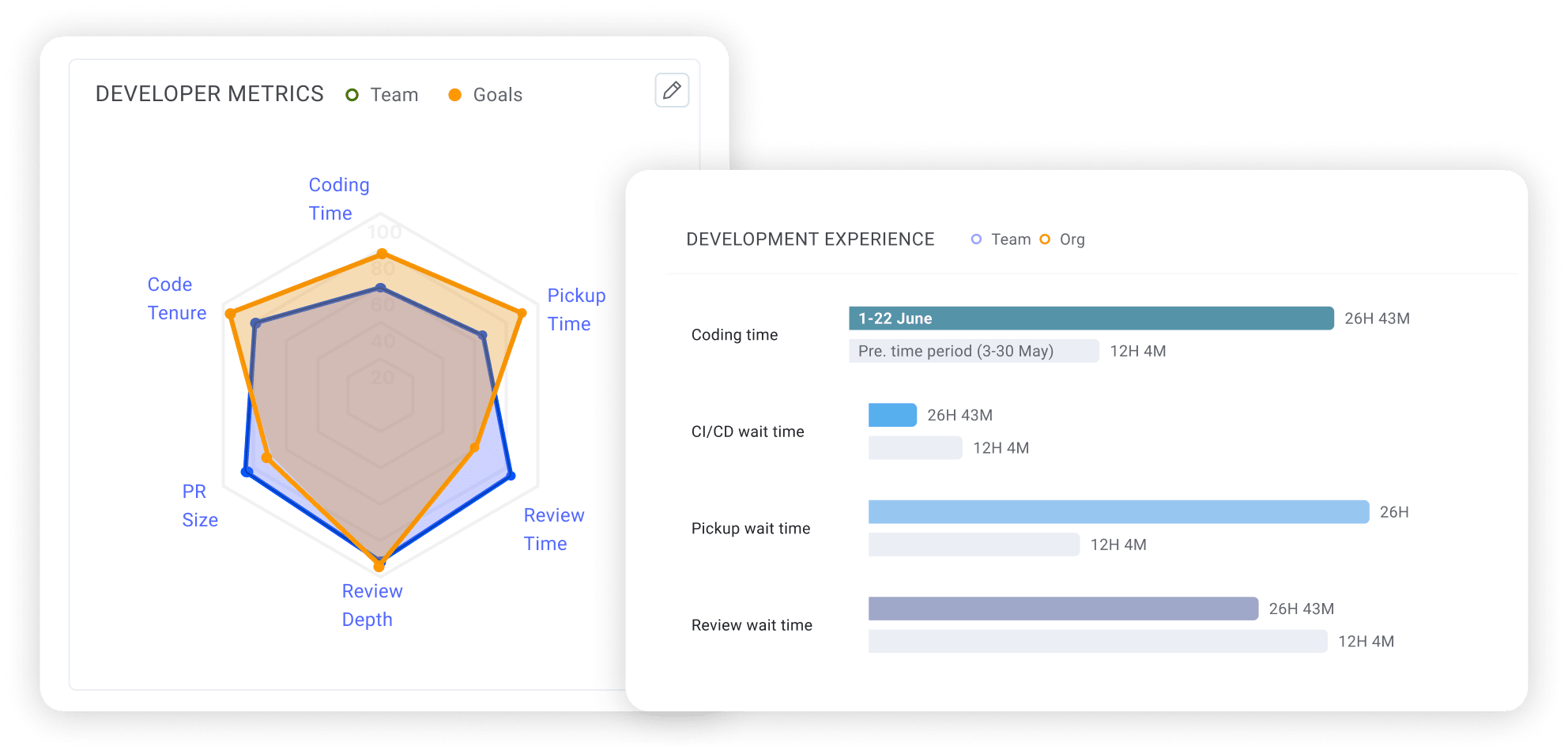Engineering Leader's Guide to Accelerating Developer Productivity
Discover how to quantify Developer Productivity, common blockers, strategies to improve it, and how and when to present Dev Productivity data. In this guide, we cover:
Why measuring and working to optimize Developer Productivity is so difficult
How to use the data to set goals, inject automation, and inform 1:1 conversations
The metrics and KPIs that illustrate productivity and act as a baseline for improvement
Engineering Leader's Guide to Accelerating Developer Productivity
Download your free copy

Why Leaders Struggle with Developer Productivity Initiatives
It’s easy to blame the difficulty of measuring developer productivity on skepticism and team pushback. But the reality is that good measurement (and scalable improvement) remains out of reach for three main reasons:
Data is everywhere–insight is missing
A lack of standardization in metrics and approaches
Change–the universal constant in software engineering

Developer Productivity Indicators
Developer productivity is a multi-faceted concept that encompasses three key areas: efficiency, effectiveness, and experience–spanning critical engineering KPIs like DORA metrics, Business Alignment, and Developer Experience. Focusing on these three “E’s” illustrates a dev’s productivity–i.e. The ability to produce high-quality work in alignment with business goals.

Key Considerations for Productivity Improvement
Understanding developer productivity is crucial for distinguishing between mere activity and meaningful progress. Productivity in software development goes beyond the simple measure of output–it means creating high-quality software, efficiently and effectively, while aligning with business goals and customer needs.

Accelerating Developer Productivity
Enhancing developer productivity is crucial for a business to maintain a competitive advantage–and a structured approach is essential. The basic framework for improving developer productivity–after identifying operational bottlenecks using industry benchmarks, of course–is as follows:
Goal setting using quantifiable engineering metrics
Automating productivity improvement and toil reduction
Using data to inform conversations, recurring syncs, and developer ceremonies

When, Where, and How to Use Productivity Data
Effective, audience and occasion-specific reporting on developer productivity is crucial for communicating progress, identifying areas for improvement, and aligning efforts with business objectives.
C-Suite: Engineering business review | Present high-level metrics and strategic business outcomes
Engineering management: Project status meeting and monthly rollup | Focus on skills, competencies, and process efficiency to manage day-to-day operations and drive improvements
Developers: 1:1s and performance reviews | Offer personalized feedback that helps devs understand their contributions to team productivity and areas for growth

Download Your Free Copy

More resources

Report
2026 Software Engineering Benchmarks Report
Created from a study of 8.1+ M PRs from 4,800 engineering teams across 42 countries.

Workshop
2026 Benchmarks Insights
Explore new AI insights from the 2026 Software Engineering Benchmarks Report – backed by 8.1M+ PRs across 4,800 engineering teams and 42 countries.

Demo
Understand AI adoption and developer impact with the AI Insights Dashboard
This demo guides you through the AI Insights Dashboard, demonstrating how to track and analyze trends in AI tool adoption, rule coverage, and code quality....